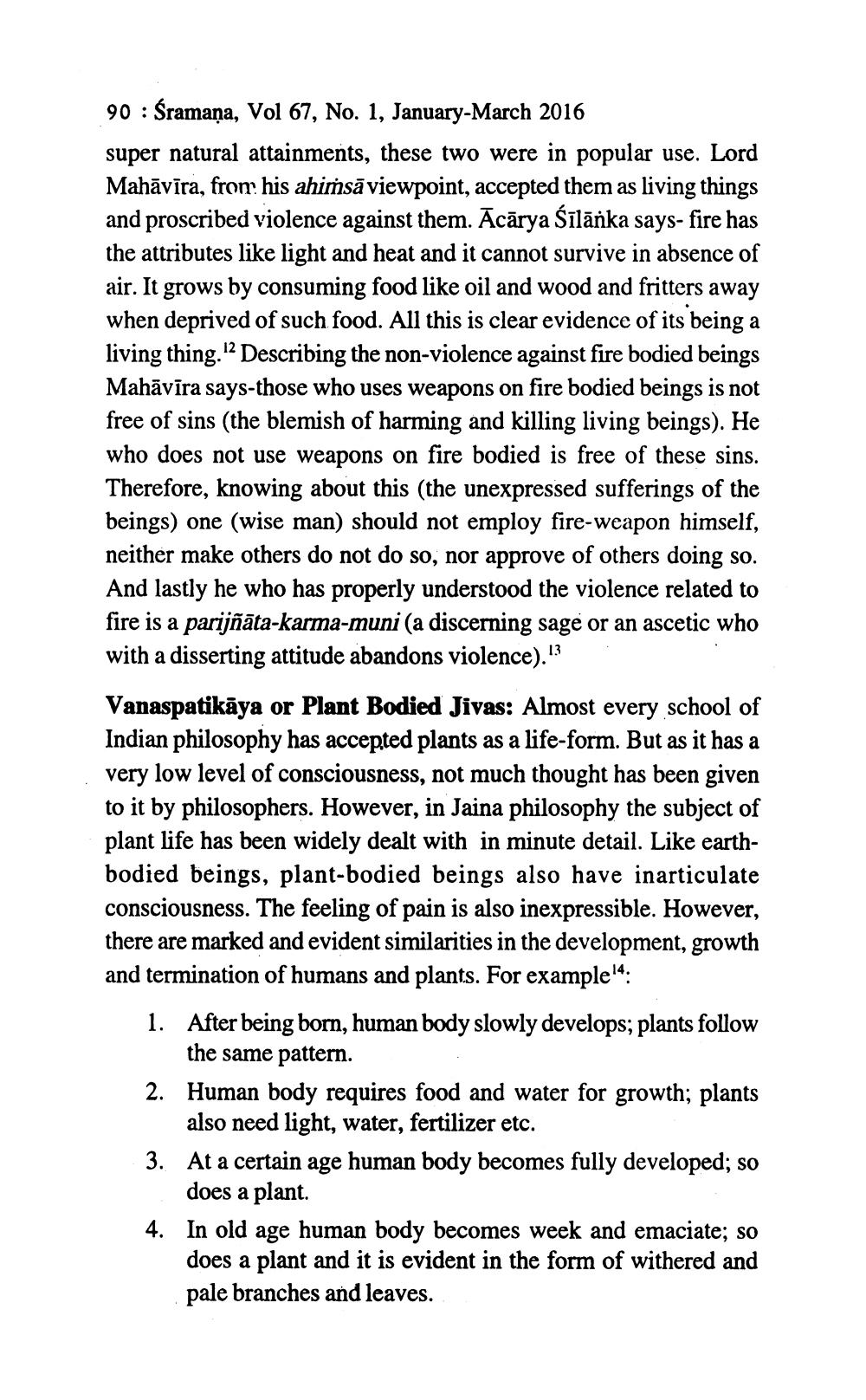________________
90 : Śramaņa, Vol 67, No. 1, January-March 2016 super natural attainments, these two were in popular use. Lord Mahāvīra, from his ahiṁsā viewpoint, accepted them as living things and proscribed violence against them. Ācārya Sīlānka says- fire has the attributes like light and heat and it cannot survive in absence of air. It grows by consuming food like oil and wood and fritters away when deprived of such food. All this is clear evidence of its being a living thing." Describing the non-violence against fire bodied beings Mahāvīra says-those who uses weapons on fire bodied beings is not free of sins (the blemish of harming and killing living beings). He who does not use weapons on fire bodied is free of these sins. Therefore, knowing about this (the unexpressed sufferings of the beings) one (wise man) should not employ fire-weapon himself, neither make others do not do so, nor approve of others doing so. And lastly he who has properly understood the violence related to fire is a parijñāta-karma-muni (a discerning sage or an ascetic who with a disserting attitude abandons violence).13
Vanaspatikāya or Plant Bodied Jivas: Almost every school of Indian philosophy has accepted plants as a life-form. But as it has a very low level of consciousness, not much thought has been given to it by philosophers. However, in Jaina philosophy the subject of plant life has been widely dealt with in minute detail. Like earthbodied beings, plant-bodied beings also have inarticulate consciousness. The feeling of pain is also inexpressible. However, there are marked and evident similarities in the development, growth and termination of humans and plants. For example!*: 1. After being born, human body slowly develops; plants follow
the same pattern. 2. Human body requires food and water for growth; plants
also need light, water, fertilizer etc. 3. At a certain age human body becomes fully developed; so
does a plant. 4. In old age human body becomes week and emaciate; so
does a plant and it is evident in the form of withered and pale branches and leaves.




